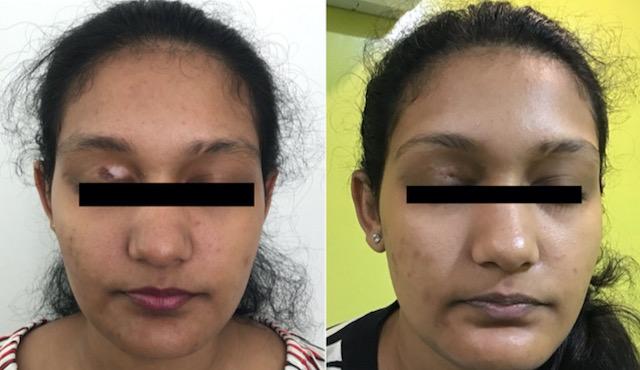Vitiligo Surgery: Vitiligo is a benign but debilitating skin issue with many social and psychological implications. Dr Nithya Raghunath will review your medical history for vitiligo surgery, and may also ask for blood tests such as thyroid levels etc.
There are many treatment options. The goal of most treatments is to restore the lost skin color. Vitiligo Surgery is one of them.
There are many treatment options and the type of treatment that is best for you will depend on your preference, overall health, age, and where the vitiligo appears on your body etc. Some people choose not to treat vitiligo.
- No medical treatment (use cosmetics to camouflage lost color)
- Cosmetic options include makeup, self-tanners, and skin dyes.
- Offers safe way to make vitiligo less noticeable.
- Often recommended for children because it avoids possible side effects from medicine.
- Must be repeatedly applied, can be time-consuming, takes practice to get a natural-looking result.
- Medicine applied to the skin
- Several different topical (applied to the skin) medicines can add color to your skin.
- Prescribed for small areas.
- The most commonly prescribed medicine is a potent or super-potent corticosteroid that you apply to your skin. About half, 45%, of patients regain at least some skin color after 4 to 6 months.
- A corticosteroid that you apply to your skin may be combined with another medicine to improve results.
- This option works best in people with darkly pigmented skin.
- These medicines are most effective on certain areas of the body, such as the face. They are least effective on the hands and feet.
- Some of these medicines should not be used on the face because of possible side effects.
- These medicines have possible side effects, so patients must be carefully monitored. A possible serious side effect of using of a topical corticosteroid for a year or longer is skin atrophy. This means the skin becomes paper thin, very dry, and fragile.
- Light treatment
- Uses light to restore lost color to the skin.
- Patient may sit in a light box or receive excimer laser treatments.
- Light boxes are used to treat widespread vitiligo; lasers are used to treat a small area.
- Works best on the face; least effective on hands and feet.
- Results can disappear. About half, 44%, see results disappear within 1 year of stopping treatment. After 4 years, about 86% lose some color restored by treatment.
- May cause patients with darkly pigmented skin to see areas of darker skin after treatment, but treated skin usually matches untreated skin within a few months.
- Requires a time commitment. Patients need 2 to 3 treatments per week for several weeks.
- May be combined with another treatment such as a corticosteroid that you apply to your skin.
- PUVA light therapy
- Uses UVA light and a medicine called psoralen to restore skin color.
- Psoralen may be applied to the skin or taken as a pill.
- Can treat widespread vitiligo.
- About 50% to 75% effective in restoring pigment to the face, trunk, upper arms, and upper legs.
- Not very effective for the hands or feet.
- Time-consuming, requiring treatment at a hospital or PUVA center twice a week for about 1 year.
- Psoralen can affect the eyes, so this treatment requires an eye exam before and after finishing treatment.
- To help prevent serious side effects, patients are carefully monitored.
- Vitiligo Surgery
- Maybe an option when light therapy and medicines applied to the skin do not work.
- For adults whose vitiligo has been stable (not changed) for at least 6 months.
- Not for children.
- Not for people who scar easily or develop keloids (scars that rise above the skin).
- Different surgical procedures are available. Most involve removing skin with your natural color or skin cells and placing these where you need color.
- Can be effective for 90% to 95% of patients.
- Possible side effects include failure to work, cobblestone-like skin, and infection.
- Melanocyte Transfer:
- A lot less invasive than skin grafts
- Produces better overall results
- Shorter downtime
Outcome of Vitiligo Surgery
It is not possible to predict how a patient will respond to treatment. It is important to keep in mind that no one treatment works for everyone. Results can vary from one part of the body to another. Combining two or more treatments often gives the best results.

